Welcome to our free classical music site

Do you write about classical music? Are you a blogger? Want to team up with Classical Connect? Send us a message, let's talk!

Do you write about classical music? Are you a blogger? Want to team up with Classical Connect? Send us a message, let's talk!
February 27, 2017. Chopin, Rossini and more. This is one of those overabundant weeks: several composers of great talent, each deserving a separate entry. Frédéric Chopin was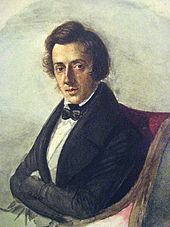 born on March 1st of 1810 in a small village of Żelazowa Wola, about 30 miles west of Warsaw, the Polish capital. We celebrate him, probably the greatest piano composer of all time, every year. This time, we’ll play one of his pieces in different interpretations. We’ve done something similar but with just one pianist, when we dedicated an entry to three different interpretations of Chopin’s Polonaise in F-sharp minor, Op. 44 made by Arthur Rubinstein at different stages of his career. Today we’ll play one of the Ballades, No.3 in A-flat Major, which was written in 1841. By then Chopin had been living in Paris for 10 years: he left Poland in 1831 in the aftermath of the November Uprising, a Polish revolt against Russia, which was brutally suppressed by the czarist army. In 1841 Chopin was at the peak of his creative power and still healthy: just one year later the symptoms of the disease that killed him at the age of 39 would start showing up. Ballade no. 3 is in the repertory of every concertizing pianist, so the selection of interpreters is almost infinite. We’ll narrow it down to just three: first, a historical recording made by Sergei Rachmaninov, most likely in the 1930s (here). You’ll notice the freedom of tempos, which would probably be deemed inappropriate today. Even though the recording quality is not very good, the nuanced performance is lovely. The one made by Maurizio Pollini is very different, much tighter and precise, but still warm; the overall lines are wonderful. The performance by Ivan Moravec, made in 1966 (here), is probably the most idiosyncratic and the most lyrical. It’s slower by a minute than Pollini’s. If you go to our library, you’ll also find several recordings made by “our” pianists: Sophia Agranovich, Gianluca Di Donato and Mario Carreño among them.
born on March 1st of 1810 in a small village of Żelazowa Wola, about 30 miles west of Warsaw, the Polish capital. We celebrate him, probably the greatest piano composer of all time, every year. This time, we’ll play one of his pieces in different interpretations. We’ve done something similar but with just one pianist, when we dedicated an entry to three different interpretations of Chopin’s Polonaise in F-sharp minor, Op. 44 made by Arthur Rubinstein at different stages of his career. Today we’ll play one of the Ballades, No.3 in A-flat Major, which was written in 1841. By then Chopin had been living in Paris for 10 years: he left Poland in 1831 in the aftermath of the November Uprising, a Polish revolt against Russia, which was brutally suppressed by the czarist army. In 1841 Chopin was at the peak of his creative power and still healthy: just one year later the symptoms of the disease that killed him at the age of 39 would start showing up. Ballade no. 3 is in the repertory of every concertizing pianist, so the selection of interpreters is almost infinite. We’ll narrow it down to just three: first, a historical recording made by Sergei Rachmaninov, most likely in the 1930s (here). You’ll notice the freedom of tempos, which would probably be deemed inappropriate today. Even though the recording quality is not very good, the nuanced performance is lovely. The one made by Maurizio Pollini is very different, much tighter and precise, but still warm; the overall lines are wonderful. The performance by Ivan Moravec, made in 1966 (here), is probably the most idiosyncratic and the most lyrical. It’s slower by a minute than Pollini’s. If you go to our library, you’ll also find several recordings made by “our” pianists: Sophia Agranovich, Gianluca Di Donato and Mario Carreño among them.
Gioachino Rossini, who stood at the origins of the bel canto opera, was born on February 29th of 1792. A melodic genius, he was known to work incredibly fast. He composed 62 operas, but, even though he lived for 76 years, all of them were written within a period of just 20 years: his last opera, Guillaume Tell (William Tell) was composed in 1829, when Rossini was 37. It’s said that he was late composing the overture for La gazza larda (The thieving magpie), so, to ensure that it was done in time, the producer locked Rossini in a room. As he wrote the pages of the score, he was throwing them out of a window; on the other side copyists were picking them up and creating the orchestral parts for musicians to rehearse at the very last moment. Here is the result, as interpreted by the Vienna Philharmonic Orchestra under the direction of Claudio Abbado.
Bedřich Smetana was also born this week, on March 2nd of 1824. A talented composer, he created the Czech national school, very much like the Great Five did in Russia around the same time. He’s probably best known for a set of symphonic poems Má vlast and the opera The Bartered Bride. In 1854 he wrote Piano Trio in G minor, following the death of his older daughter at the age of four of scarlet fever (his second daughter died earlier that same tragic year of tuberculosis). Here it is in the performance by the Lincoln Trio. This year, the violinist Desirée Ruhstrat, the cellist David Cunliffe, and Marta Aznavoorian, piano, were nominated for a Grammy in the Best Chamber Music/Small Ensemble Performance category. Our congratulations to the wonderful ensemble.
Antonio Vivaldi was also born this week (on March 3rd of 1678), we’ll get back to him another time.Permalink
February 20, 2017. Handel. George Frideric Handel, one of the greatest composers of the Baroque, was born in Halle on February 23rd of 1685. We’ve written about him many times (here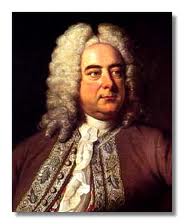 and here, for example), so on this occasion we’ll look into a period of his life following his departure from Italy. Handel lived there for about seven years, from 1703 to 1710. His operas, (especially Agrippina, which was staged during the Carnival in Venice at the end of 1709) and his oratorios and cantatas were so successful that by the end of his stay, while just 25 years old, he was already world famous. Among his admirers were Prince Ernst Georg of Hanover, and the Duke of Manchester, the English ambassador, both of whom invited Handel to their countries. Handel chose Germany and traveled to Hanover, where he was appointed Kapellmeister. We should remind ourselves of an unusual twist in the British royal lineage: by 1710 the Elector of Hanover, Georg Ludwig, was the acknowledged successor to the English throne and, upon Queen Anne’s death would become King George I of England. His son, Prince elector Georg II August, would become King George II. So, Handel was living at the court with intimate ties to Britain. Handel was given a big salary and a special travel allowance, which he used to travel to London in the autumn of 1710. London was always a musical city; one recent development at the time was the popularity of Italian operas, especially when sung by Italian castratos. Giovanni Bononcini was the acknowledged master of opera – that is till Handel’s arrival. As soon as he got to London, Handel set to work on a new opera; to speed up the process he reused some of the material he had written earlier in Italy. The opera was called Rinaldo, and the title role was sung by Nicolo Grimaldo, a castrato known as Nicolini. Nicolini, who became famous for performing major parts in operas by Alessandro Scarlatti, Porpora, Vinci and Bononcini, became one of Handel’s favorite singers. These days the role of Rinaldo is usually sung by mezzo-sopranos or countertenors; Cecilia Bartoli is one of the best interpreters (here she is in the famous aria Lascia ch'io pianga).
and here, for example), so on this occasion we’ll look into a period of his life following his departure from Italy. Handel lived there for about seven years, from 1703 to 1710. His operas, (especially Agrippina, which was staged during the Carnival in Venice at the end of 1709) and his oratorios and cantatas were so successful that by the end of his stay, while just 25 years old, he was already world famous. Among his admirers were Prince Ernst Georg of Hanover, and the Duke of Manchester, the English ambassador, both of whom invited Handel to their countries. Handel chose Germany and traveled to Hanover, where he was appointed Kapellmeister. We should remind ourselves of an unusual twist in the British royal lineage: by 1710 the Elector of Hanover, Georg Ludwig, was the acknowledged successor to the English throne and, upon Queen Anne’s death would become King George I of England. His son, Prince elector Georg II August, would become King George II. So, Handel was living at the court with intimate ties to Britain. Handel was given a big salary and a special travel allowance, which he used to travel to London in the autumn of 1710. London was always a musical city; one recent development at the time was the popularity of Italian operas, especially when sung by Italian castratos. Giovanni Bononcini was the acknowledged master of opera – that is till Handel’s arrival. As soon as he got to London, Handel set to work on a new opera; to speed up the process he reused some of the material he had written earlier in Italy. The opera was called Rinaldo, and the title role was sung by Nicolo Grimaldo, a castrato known as Nicolini. Nicolini, who became famous for performing major parts in operas by Alessandro Scarlatti, Porpora, Vinci and Bononcini, became one of Handel’s favorite singers. These days the role of Rinaldo is usually sung by mezzo-sopranos or countertenors; Cecilia Bartoli is one of the best interpreters (here she is in the famous aria Lascia ch'io pianga).
Rinaldo was a tremendous success but Handle had to return to Hanover, where he stayed for another year and a half. He obtained a leave from the court and moved to London by the end of 1712. There, he wrote two more operas, and even though they were not as successful as Rinaldo, which had continued to be staged practically every season; his popularity didn’t suffer. In the summer of 1714 the Elector of Hanover moved to London; on August 1st Queen Anne suffered a stroke and died, and George was proclaimed the King. Even though his relationship with Handel during the previous two years had gotten frostier (George resented that Handel preferred London to his court in Hanover) it became more cordial after the coronation. Te Deum and Jubilate, which Handel composed in 1714, were performed for the King, after which George doubled Handel’s salary. During the next five years, Handel didn’t write a single opera, concentrating instead on orchestral compositions and chamber pieces. His most successful composition of the period was Water Music, an orchestral suite written for George I to accompany him on his boat trip up the Thames. Water Music consists of three separate suites; here’s the first one, performed by the Academy Of St. Martin in the Fields under the direction of the late Neville Marriner.Permalink
February 13, 2017. Through the ages and countries. This week affords us an unusually broad view of the development of European music, from the late 16th century to today. Michael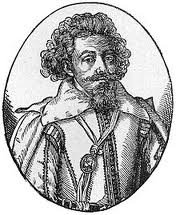 Praetorius was born in February 5th of 1571 in Creuzburg, Thuringia (other sources state his birthday as February 15th of that year). At the time, Germany’s musical culture was rather underdeveloped. There was a not a single significant German composer, whereas in Italy the late 16th century was considered late Renaissance: Palestrina and Lasso were born half a century before Praetorius, while Giovanni Gabrieli and Carlo Gesualdo were a generation older. Praetorius had a local musical education, and the only early encounter with a significant foreign composer that we are aware of was with John Dowland, who was invited by Duke Heinrich Julius of Brunswick-Wolfenbütte to meet with his court composer. In this sense Praetorius was a singularly German composer. Extremely prolific (he composed twelve hundred chorales) Praetorius exerted much influence over many composers, starting with the young Heinrich Schütz and through him on a generation of German musicians, including Johann Sebastian Bach. Later in life, when he was living and working in the cosmopolitan Dresden, he became more familiar with and influenced by the contemporary Italians; some of Praetorius’s compositions of the time clearly anticipate the arrival of the Baroque. In 1619, two years before his untimely death, Praetorius published a set of choral works called Polyhymnia Caduceatrix et Panegyrica. Here’s a wonderful chorale from that set, Puer natus in Bethlehem. It’s performed by the Gabrieli Consort.
Praetorius was born in February 5th of 1571 in Creuzburg, Thuringia (other sources state his birthday as February 15th of that year). At the time, Germany’s musical culture was rather underdeveloped. There was a not a single significant German composer, whereas in Italy the late 16th century was considered late Renaissance: Palestrina and Lasso were born half a century before Praetorius, while Giovanni Gabrieli and Carlo Gesualdo were a generation older. Praetorius had a local musical education, and the only early encounter with a significant foreign composer that we are aware of was with John Dowland, who was invited by Duke Heinrich Julius of Brunswick-Wolfenbütte to meet with his court composer. In this sense Praetorius was a singularly German composer. Extremely prolific (he composed twelve hundred chorales) Praetorius exerted much influence over many composers, starting with the young Heinrich Schütz and through him on a generation of German musicians, including Johann Sebastian Bach. Later in life, when he was living and working in the cosmopolitan Dresden, he became more familiar with and influenced by the contemporary Italians; some of Praetorius’s compositions of the time clearly anticipate the arrival of the Baroque. In 1619, two years before his untimely death, Praetorius published a set of choral works called Polyhymnia Caduceatrix et Panegyrica. Here’s a wonderful chorale from that set, Puer natus in Bethlehem. It’s performed by the Gabrieli Consort.
Francesco Cavalli was born February 14th of 1602, just some 30 years after Praetorius, but he belonged to a completely different musical world. Renaissance music, with its polyphony was a thing of the past; Claudio Monteverdi composed L’Orfeo, thus establishing the new musical form - opera. Cavalli, who was born in Lombardy, as a teenager moved to Venice where he was a singer at the St. Mark’s Basilica. Monteverdi was the music director there and became Cavalli’s teacher. Cavalli wrote his first opera in 1639 when he was already a mature composer (most of his early compositions were church music). He went on to write 41 operas, many of which survive to this day. Cavalli was instrumental in developing opera as a musical genre: when his started, opera was in its infancy, and by the time he wrote his last opera in 1673, it was a mature (and extremely popular) art. Here’s the aria Piante ombrose from his early opera, L'Amore Innamorato. Nuria Rial is the soprano. Christina Pluhar leads the ensemble L'Arpeggiata.
Another Italian, Arcangelo Corelli was born fifty years later, on February 17th of 1653. He grew up in the musical environment of flourishing Baroque. At the age of 13 Arcangelo moved to Bologna, one of the music centers of Italy, famous for a major school of violin playing. At the age of seventeen, already a fine violinist, Corelli became a member of the Accademia Filarmonica. He moved to Rome around 1675, where he found patrons in Queen Christina and, later, Cardinal Pietro Ottoboni. He performed, composed and taught: many of his pupils, such as Francesco Geminiani and Pietro Locatelli became famous as composers and violinist. Here’s Corelli’s Concerto Grosso, Op. 6 no.4 performed by I Musici.
We’ll skip Luigi Boccherini, a wonderful Italian composer of the classical era and jump straight into the 20th century. György Kurtág was born on February 19th of 1926. Together with his good friend György Ligeti, Kurtág is one of the most interesting contemporary composers. Here’s his Stele, performed by the Berlin Philharmonic under the direction of Claudio Abbado.Permalink
February 6, 2017. Alban Berg. The great Austrian modernist composer Alban Berg was born on February 9th of 1885. When we celebrated him the last time two years ago, we wrote about his first opera, Wozzeck, which was completed in 1922. Wozzeck was a huge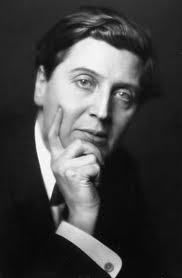 success, which speaks volumes of the Viennese musical sensibilities – almost 100 years later, it is still considered a “difficult” opera. Vienna was full of contradictions: on the one hand, it was the city where Schoenberg, Webern and Berg were acknowledged as masters and accepted by the artistic community; at the same time, it was more conservative than probably any other European capital, anti-Semitic, clinging to the vestiges of the lost empire. Greatly diminished in the aftermath of the Great war, Vienna was the capital of a small country, not an Empire. Austria even wanted to join Germany as a province, but the Allies wouldn’t have it. At the beginning of the 20th century Vienna was one of the world centers of music, if not the center, but by mid-1920s many musicians started moving from Vienna to Berlin; back then, as now, Berlin was seen as a more open, exciting cosmopolitan city. Composers Franz Schreker, whose operas were almost as famous as Richard Strauss’s, and Ernst Krenek left Vienna. Alexander von Zemlinsky, the famous composer and an important figure in the Viennese musical cultural life, also moved to Berlin. Even Schoenberg himself was spending more time in Berlin than in Vienna. As Michael Haas, a music producer and writer points out, conductors Fritz Stiedry, who assisted Mahler in his youth, Georg Szell, and Erich Kleiber, all at some point active in Vienna, also left the city. Still, even with these losses, the musical life of Vienna was vibrant. The Vienna Philharmonic was still considered one of the best orchestras in the world and practically all prominent musicians performed there.
success, which speaks volumes of the Viennese musical sensibilities – almost 100 years later, it is still considered a “difficult” opera. Vienna was full of contradictions: on the one hand, it was the city where Schoenberg, Webern and Berg were acknowledged as masters and accepted by the artistic community; at the same time, it was more conservative than probably any other European capital, anti-Semitic, clinging to the vestiges of the lost empire. Greatly diminished in the aftermath of the Great war, Vienna was the capital of a small country, not an Empire. Austria even wanted to join Germany as a province, but the Allies wouldn’t have it. At the beginning of the 20th century Vienna was one of the world centers of music, if not the center, but by mid-1920s many musicians started moving from Vienna to Berlin; back then, as now, Berlin was seen as a more open, exciting cosmopolitan city. Composers Franz Schreker, whose operas were almost as famous as Richard Strauss’s, and Ernst Krenek left Vienna. Alexander von Zemlinsky, the famous composer and an important figure in the Viennese musical cultural life, also moved to Berlin. Even Schoenberg himself was spending more time in Berlin than in Vienna. As Michael Haas, a music producer and writer points out, conductors Fritz Stiedry, who assisted Mahler in his youth, Georg Szell, and Erich Kleiber, all at some point active in Vienna, also left the city. Still, even with these losses, the musical life of Vienna was vibrant. The Vienna Philharmonic was still considered one of the best orchestras in the world and practically all prominent musicians performed there.
Berg is best known as the creator of two seminal operas, the already-mentioned Wozzeck and Lulu, on which he started working in 1928 and continued for the rest of his life, leaving it incomplete on his death in 1935. The period between these two major compositions was also very productive. One of the more interesting pieces written during this time was Kammerkonzert (Chamber Concerto), a composition for Piano and Violin with 13 Wind Instruments. Even though it was composed in the 12-tone technique, Berg’s innate lyricism shines through, softening its very rigorous structure. Concerto was written in honor of Schoenberg’s 50th birthday, and Berg decided to create the main theme (or, rather, the main tone sequence) out of the names of Schoenberg and his two favorite pupils’, Anton Webern’s, and his own. In German musical notation, B is what in English is called B flat, while the English B is called H; the flat sign is “-es.” Therefore, “ArnolD SCHoenBErG” turned into the sequence of A–D–E-flat–C–B–B-flat–E–G. From “Anton wEBErn” he derived A–E–B flat–E, and from his own name, “AlBAn BErG,” A–B-flat–A–B-flat–E–G. Berg then went on to invert the theme, mirroring all intervals in the opposite direction, so that, for example, a third up became a third down. He then “retrogrades” it, running the sequence from the end to the beginning. Despite this scientific, almost mathematical approach, the music retains its undeniable warmth. Of course it’s not an easy listening, and we have to apologize for presenting two difficult pieces two weeks in a row (last week it was Luigi Nono’s Como una ola de fuerza y luz). Here’s Kammerkonzert, performed by Staatskapelle Dresden, Giuseppe Sinopoli conducting. The pianist is Andrea Lucchesini, the violinist – Reiko Watanabe.Permalink
January 30, 2017. Schubert, Mendelssohn and Nono. Two great German composers – and two prodigies – were born this week, Franz Schubert, on January 31st of 1797, and Felix Mendelssohn, on February 3rd of 1809. We’ve written about Schubert, a supreme melodist and one of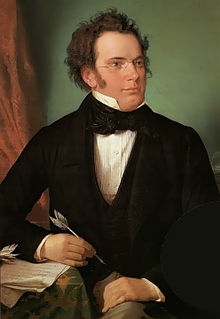 the most creative composers of the 19th century, practically every year. And last year, we wrote rather extensively about Mendelssohn. So this year we’ll present some of their music and then turn to a lesser known talent. Schubert is rightly famous for his songs. He wrote several cycles, two of which, Die schöne Müllerin and Winterreise, are considered the pinnacle of the German “lied.” He also wrote numerous individual songs, and Nacht und Träume (Night and Dreams) is one of them. Very difficult because of its exceedingly long melodic lines, it’s beautifully sung here by Nicolai Gedda. Gerald Moore is at the piano. Mendelssohn also wrote songs, eight books of them, but his were "Songs without words." Each book contains six short piano pieces, some very simple, some a bit more difficult, but all charming. Here’s Op. 19 no. 4, played by almost everybody who ever studied the piano, but probably not as exquisitely as Daniel Barenboim does in this recording. And slightly more challenging is Op.30 no. 2, here, also by Barenboim.
the most creative composers of the 19th century, practically every year. And last year, we wrote rather extensively about Mendelssohn. So this year we’ll present some of their music and then turn to a lesser known talent. Schubert is rightly famous for his songs. He wrote several cycles, two of which, Die schöne Müllerin and Winterreise, are considered the pinnacle of the German “lied.” He also wrote numerous individual songs, and Nacht und Träume (Night and Dreams) is one of them. Very difficult because of its exceedingly long melodic lines, it’s beautifully sung here by Nicolai Gedda. Gerald Moore is at the piano. Mendelssohn also wrote songs, eight books of them, but his were "Songs without words." Each book contains six short piano pieces, some very simple, some a bit more difficult, but all charming. Here’s Op. 19 no. 4, played by almost everybody who ever studied the piano, but probably not as exquisitely as Daniel Barenboim does in this recording. And slightly more challenging is Op.30 no. 2, here, also by Barenboim.
We just missed the birthday of Luigi Nono by one day – he was born January 29th of 1924 in Venice. He studied composition in his hometown with Gian Francesco Malipiero from 1941 to 1945. In 1946 he met Bruno Maderna, a modernist composer four years his senior, and they became friends for life. Maderna got in touch with the Darmstadt courses in 1949; in 1950 both he and Nono went there for the summer, with Nono attending classes by Edgar Varèse. Nono continued going to Darmstadt for many years and from 1957 on he taught there every year. Through their work at Darmstadt, Nono, Boulez and Stockhausen, all three under 30, became known as leaders of the European avant-garde music. Politically active, Nono was involved in leftist causes. He wrote many pieces for human voice (often accompanied by tape recordings) for which he used text by Karl Marx, Fidel Castro, Che Guevara and other revolutionaries. Obviously, that’s not what have made them interesting, his music did. In 1971, on suggestion by Maurizio Pollini, Nono started working on a piece for piano and orchestra called Como una ola de fuerza y luz (Like a wave of strength and light). While still working on it, he had learned of the death of his friend Luciano Cruz, the leader of The Revolutionary Left Movement in Chile. (It’s not clear who killed Cruz but CIA reports suggest that it was a result of the rivalry on the Left during the Allende presidency). Nono changed his plans and created a piece for orchestra, solo soprano, piano, a chorus recorded on tape and other pre-recorded sounds. A complex composition, it demonstrates an amazing evolution of how we perceive the organized sound that we call music. Written 140 years after Schubert and Mendelssohn’s songs, it completely abandons tonality and uses sound sources that were never considered before. Even 46 years later, it’s not easy listening. Still, it’s worth a try, even if in small dozes (the complete piece runs for about 30 minutes). The sounds (and silences) of it, the juxtapositions of fury and serenity, are at times profound. Here it is, with Claudio Abbado conducting the Bavarian Radio Orchestra. Maurizio Pollini is on the piano, Slavka Taskova is the soprano. Permalink
January 23, 2017. Mozart – and Clementi. Wolfgang Amadeus Mozart was born on January 27th of 1756. Every year we consider different episodes from Mozart’s life, and last year we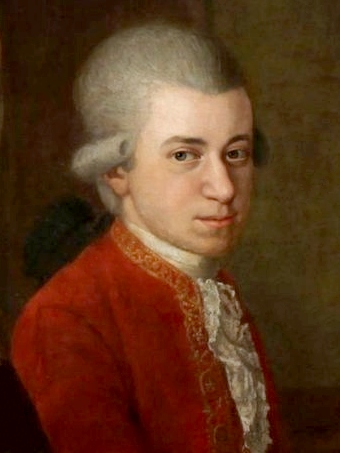 wrote about his final years in Salzburg in the Archbishop Colloredo’s employ, a bitter resignation and his move to Vienna. It was 1781, Mozart was 25 years old, and the success of his new opera Idomeneo was still fresh in his memory. That was very important, as opera was then the most prestigious form of art, recognized as such in courts and palaces; a composer could write many wonderful symphonies and sonatas (and Mozart had already written 34 symphonies and many sonatas), but an opera could make his name. But Mozart was then a freelancer, without a permanent position or salary. In Vienna, he found several students, some among the nobility and that helped to pay the bills. He also continued to compose; several of his piano and violin sonatas were written during that period, many dedicated to his pupil, Josepha von Auernhammer, who was madly in love with him. He was also performing in many public and private halls, and was considered the best keyboard player in town. An unusual competition took place on the 24th of December, 1781, as Mozart confronted an unexpected rival. Muzio Clementi, a composer and keyboard player, had recently arrived in Vienna. He acquired his fame in London, and the Emperor Joseph II, an enlightened ruler and patron of arts, decided to have a competition between him and the local virtuoso.
wrote about his final years in Salzburg in the Archbishop Colloredo’s employ, a bitter resignation and his move to Vienna. It was 1781, Mozart was 25 years old, and the success of his new opera Idomeneo was still fresh in his memory. That was very important, as opera was then the most prestigious form of art, recognized as such in courts and palaces; a composer could write many wonderful symphonies and sonatas (and Mozart had already written 34 symphonies and many sonatas), but an opera could make his name. But Mozart was then a freelancer, without a permanent position or salary. In Vienna, he found several students, some among the nobility and that helped to pay the bills. He also continued to compose; several of his piano and violin sonatas were written during that period, many dedicated to his pupil, Josepha von Auernhammer, who was madly in love with him. He was also performing in many public and private halls, and was considered the best keyboard player in town. An unusual competition took place on the 24th of December, 1781, as Mozart confronted an unexpected rival. Muzio Clementi, a composer and keyboard player, had recently arrived in Vienna. He acquired his fame in London, and the Emperor Joseph II, an enlightened ruler and patron of arts, decided to have a competition between him and the local virtuoso.
Clementi, whose birthday we also mark this week, was born on January 23rd of 1752 in Rome. He studied music as a child and by the age of 14 became the organist of the church of San Lorenzo in Damaso in Rome. That very year, Peter Beckford, a wealthy Englishman, heard him play and was impressed. He negotiated with Muzio’s father an arrangement under which he’d take Clementi to his estate, pay for his continued musical education and be entertained in return. Muzio lived in Beckford’s estate for the following seven years, and it’s said that every day he spent eight hours playing the harpsichord. He then moved to London, where he established himself as a performer and composer of keyboard sonatas. In 1789 Clementi embarked on a European tour, which took him first to Paris, where he played for Marie Antoinette and then to Vienna. The competition organized by Joseph II was a grand affair: Mozart and Clementi played in the presence of the court and the Emperor’s guests, Grand Duke Paul of Russia, the son of Empress Catherine the Great, who later became the Emperor of Russia, and his wife. This episode reminds one of a competition between another German and Italian – Handel and Scarlatti – organized by Cardinal Ottoboni in Rome in 1709. Both Mozart and Clementi were asked to improvise, then sight-read sonatas of Paisiello and finish with selections from their own compositions. No official verdict was delivered but the Emperor was very impressed, and continued speaking of it for a long time. Apparently, the self-assured Mozart was taken aback by the quality of Clementi’s playing. While Clementi was effusive in his praise of Mozart’s performance, Mozart was critical of Clementi, as he described the competition in aletter to his father. It’s especially interesting considering that one of the pieces played by Clementi was his Sonata op. 24 no. 2, which Mozart later used as one of the themes for the overture to his opera The Magic Flute! Here’s Clementi’s sonata in the performance by the pianist Young-Ah Tak, and here – the overture to the Magic Flute. Bernard Haitink conducts the Bavarian Radio Symphony Orchestra.Permalink